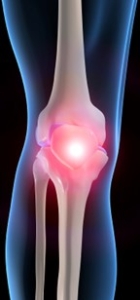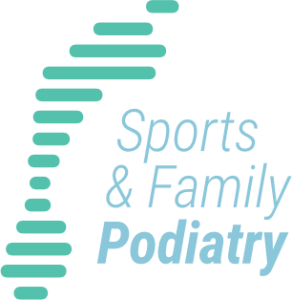Patellofemoral Pain / Runner’s Knee
What is it?
Patellofemoral Pain syndrome refers to pain arising from the joint between the kneecap and the underlying thigh bone. Other names for this condition include patellofemoral pain syndrome, chondromalacia and runner’s knee.
How does it happen?
Patellofemoral Pain syndrome most often results from overuse of the knee. When the knee is bent and straightened, the kneecap (patella) slides up and down within a groove on the end of the thigh bone (femur). With repeated bending and straightening, such as during activities involving walking, running, jumping and cycling, the underneath surface of the kneecap can become irritated. This can result in pain and occasionally swelling.
 How does it feel?
How does it feel?
The main sensation associated with patellofemoral syndrome is pain. This is felt behind and around the kneecap. Patellofemoral syndrome is commonly aggravated by walking, running, going downstairs or sitting for a prolonged period with a bent knee.
Associated with this pain may be grinding noises heard when the knee is bent or straightened, a sensation of the knee giving way and weakness in the knee. The knee may also swell at times.
What should you do?
Patellofemoral syndrome frequently does not get better on its own if the cause is not addressed and you continue your activity or sport. You should avoid any activities which aggravate or cause your knee pain to occur. Icing the front of your knee will be of benefit. Ice should be applied to the injured area for 15-20 minutes every 1-2 hours. Ideally, it should be applied using crushed ice wrapped in a moist cloth or towel.
What shouldn’t you do?
If you have or suspect you have patellofemoral syndrome, you shouldn’t ignore the problem. This may lead to your problem getting worse such that your pain becomes more severe and is felt more frequently.
Could there be any long-term effects?
Patellofemoral syndrome does not produce any long-term effects, as long as it is properly diagnosed and appropriately treated. Recovery usually takes a number of weeks. During this period you can often keep exercising. In some situations recovery may be prolonged. In these cases, surgery may be required to assist in improving the biomechanics of the kneecap and to relieve pain. This is only performed after conservative or non-surgical treatment has failed to give relief.
Management
The assistance of a sports medicine professional such as a sports podiatrist is important in the treatment of patellofemoral syndrome. Initially they can assist in diagnosing the problem and establishing the severity of the condition.
From this, the sports medicine professional will be able to determine an appropriate treatment plan. This may involve initial activity modification, the taking of anti-inflammatory medications, soft tissue treatment such as massage and stretching, taping or bracing of the kneecap and specific knee strengthening exercises to improve kneecap movement (tracking).
A sports podiatrist will also be able to assess and determine why you developed patellofemoral syndrome and address this during your recover to prevent a re-occurrence when you return to exercise and sport. This may involve changing your shoes and addressing underlying foot biomechanical problems with foot orthoses (in-shoe devices).
Location
56 Zahel St, Carina QLD 4152


